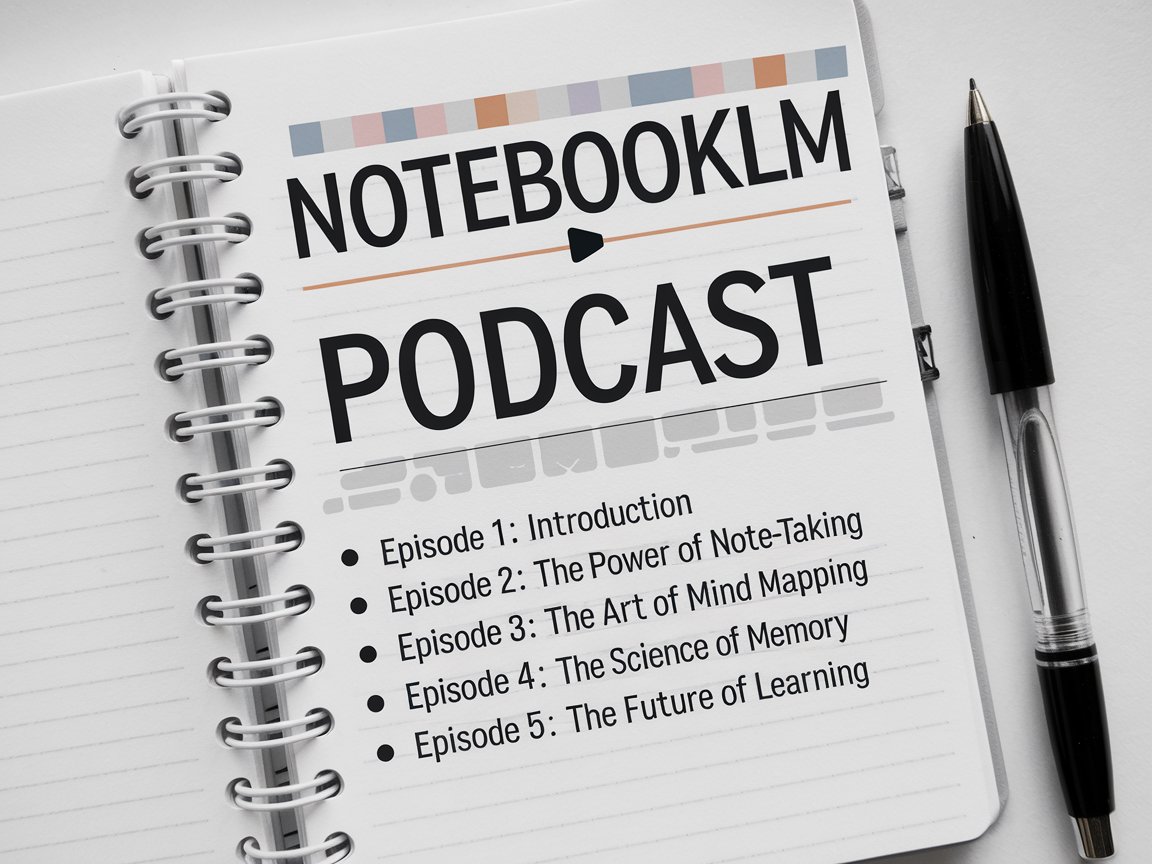
How AIdeaFlow Tackles NotebookLM's Accessibility Challenges
In the rapidly evolving landscape of artificial intelligence, accessibility remains a critical factor that influences user experience and engagement. NotebookLM, a platform designed to enhance note-taking and organization through AI, has faced significant challenges in ensuring that all users can effectively engage with its features. These challenges often stem from a lack of intuitive design, limited support for diverse user needs, and barriers that hinder the overall user experience.
Enter AIdeaFlow, a groundbreaking platform focused on creating AI-powered podcasts and audio content. AIdeaFlow not only addresses the accessibility issues faced by NotebookLM but also sets a new benchmark in inclusive design. This blog post will explore how AIdeaFlow effectively tackles the accessibility challenges associated with NotebookLM, offering innovative solutions that enhance usability for a broader audience.
Understanding Accessibility in Digital Tools
The Importance of Accessibility
- Inclusivity: Ensures that all users, regardless of ability, can access and utilize the platform.
- User Engagement: Enhanced accessibility leads to higher user satisfaction and retention.
- Compliance: Meets legal requirements and standards for accessibility, such as the ADA and WCAG.
Common Accessibility Challenges
- Complex Interfaces: Overly complicated designs can alienate users with disabilities.
- Limited Assistive Technology Support: Tools that don’t integrate well with screen readers or other assistive technologies.
- Content Accessibility: Text-heavy content that lacks alternative formats can hinder accessibility.
AIdeaFlow's Approach to Accessibility
Emphasizing User-Centric Design
- Intuitive Interface: AIdeaFlow prioritizes simplicity in its design, making it easier for users to navigate.
- Customizable Features: Users can adjust settings to suit their individual needs, enhancing their interaction with the platform.
- Feedback Mechanisms: Regular user feedback helps in continuously improving accessibility features.
Integration of Assistive Technologies
- Screen Reader Compatibility: AIdeaFlow ensures that its content is fully compatible with screen readers, allowing visually impaired users to access information seamlessly.
- Voice Commands: Users can operate the platform through voice commands, facilitating hands-free usage, which is vital for users with mobility challenges.
- Transcription Services: Automatic transcription of audio content makes it accessible for users with hearing impairments.
Enhancing Content Delivery
Diverse Content Formats
- Audio Content: AIdeaFlow specializes in audio podcasts, which offer an alternative to text-heavy notebooks, catering to auditory learners and individuals with dyslexia.
- Visual Aids: Where applicable, the use of infographics and videos can enhance understanding and retention.
- Interactive Features: Engaging elements such as quizzes and polls can provide varied methods of content interaction.
Quality of Information
- Research-Driven: AIdeaFlow's content is curated based on rigorous research, ensuring that it meets the information needs of all users.
- Clear Language: The platform uses plain language to make concepts more accessible to users of varying literacy levels.
- Contextual Help: AIdeaFlow provides context-sensitive help and resources to guide users through its functionalities.
Community Engagement and Feedback
Building a Supportive User Community
- User Forums: AIdeaFlow fosters a community where users can share experiences and solutions regarding accessibility challenges.
- Surveys and Polls: Regular surveys help AIdeaFlow gather insights into user needs and preferences for further improvements.
- Workshops and Training: Offering training sessions on how to effectively use the platform enhances user confidence and engagement.
Continuous Improvement
- Agile Development: AIdeaFlow employs agile methodologies to rapidly implement user feedback into platform updates.
- Accessibility Audits: Regular audits help identify areas for improvement and ensure compliance with the latest accessibility standards.
- Partnerships with Advocacy Groups: Collaborations with organizations focused on disability rights help AIdeaFlow remain informed about the latest accessibility trends and best practices.
Case Studies: Success Stories with AIdeaFlow
Real Users, Real Impact
- Case Study 1: A visually impaired student successfully used AIdeaFlow to create an audio podcast for their coursework, showcasing the platform's capabilities.
- Case Study 2: A teacher utilized AIdeaFlow to generate accessible lesson plans that included audio and visual elements, benefiting students with varied learning needs.
- Case Study 3: A group of professionals created an audio series using AIdeaFlow, making complex industry topics accessible to a broader audience.
Future Innovations in Accessibility
Upcoming Features
- AI-Powered Personalization: Future updates will include AI that learns user preferences and tailors content delivery accordingly.
- Language Support: Expanding language options for podcasts to cater to non-native speakers and multilingual users.
- Gamification Elements: Introducing gamified features to encourage engagement and make learning more enjoyable for users of all abilities.
Commitment to Advocacy
- Accessible Content Guidelines: AIdeaFlow aims to develop comprehensive guidelines for creating accessible content across various platforms.
- Outreach Programs: Initiatives to educate creators on the importance of accessibility in digital content creation.
- Scholarships and Grants: Funding opportunities for projects that focus on enhancing accessibility in technology.
Conclusion
AIdeaFlow stands at the forefront of addressing the accessibility challenges faced by platforms like NotebookLM. By prioritizing user-centric design, integrating assistive technologies, and fostering community engagement, AIdeaFlow not only enhances usability but also sets a new standard for inclusivity in digital tools. As the digital landscape continues to evolve, the commitment to accessibility will remain paramount, ensuring that every user has the opportunity to engage meaningfully with technology. AIdeaFlow exemplifies this commitment, paving the way for a more accessible future in AI-driven content creation.
By harnessing the power of AI, we can create a world where everyone, regardless of their abilities, can access and benefit from the wealth of knowledge available at their fingertips.